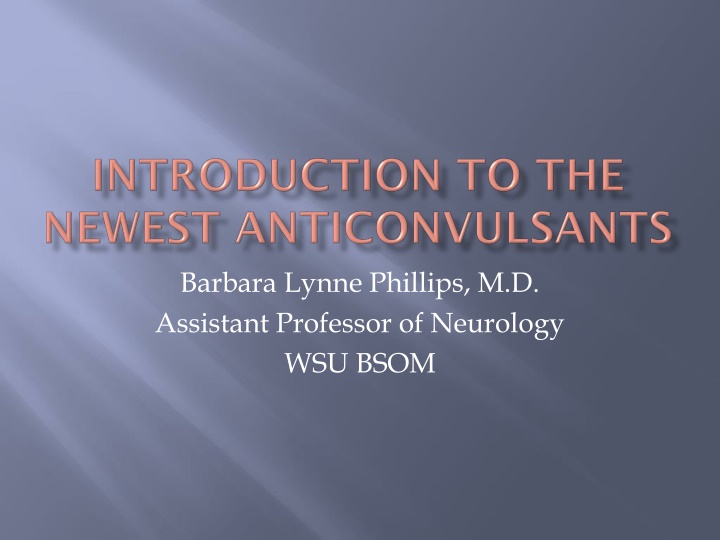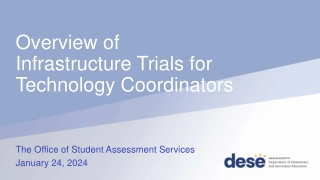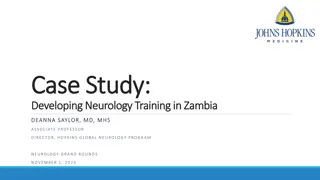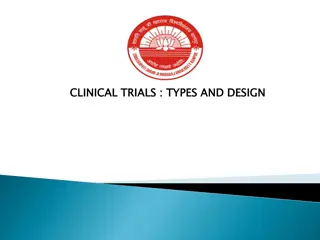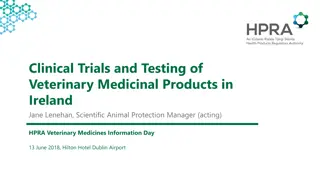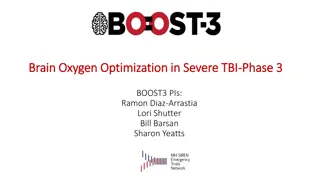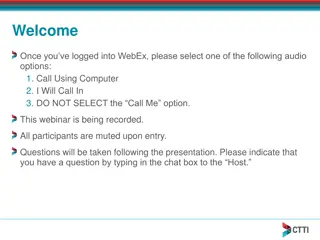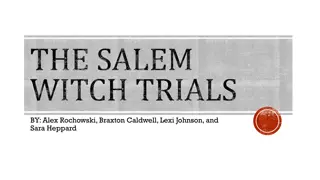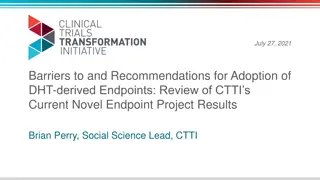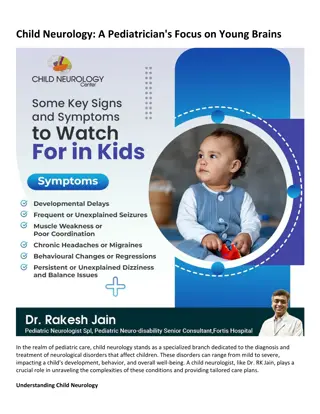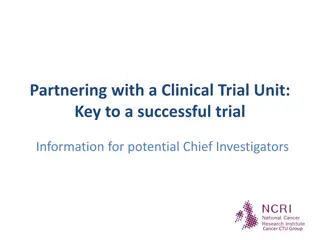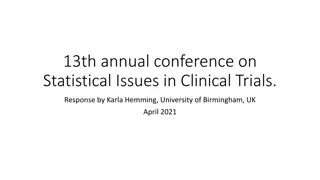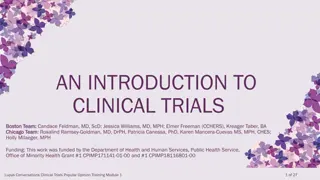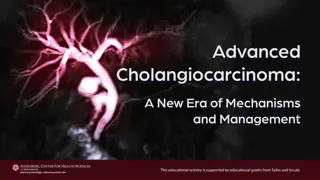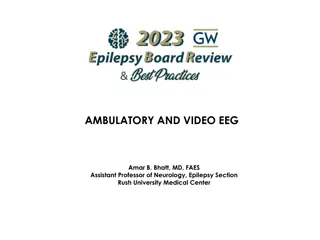Neurology Insights: Lacosamide Trials and Treatment Targets
Dr. Barbara Lynne Phillips, Assistant Professor of Neurology at WSU BSOM, has expertise in lacosamide trials and treatment targets focusing on ion channels, GABA/glutamate, and other areas. Her main disclosures include participation in Phase II and III trials of lacosamide, a notable medication in the field.
Download Presentation

Please find below an Image/Link to download the presentation.
The content on the website is provided AS IS for your information and personal use only. It may not be sold, licensed, or shared on other websites without obtaining consent from the author.If you encounter any issues during the download, it is possible that the publisher has removed the file from their server.
You are allowed to download the files provided on this website for personal or commercial use, subject to the condition that they are used lawfully. All files are the property of their respective owners.
The content on the website is provided AS IS for your information and personal use only. It may not be sold, licensed, or shared on other websites without obtaining consent from the author.
E N D
Presentation Transcript
Barbara Lynne Phillips, M.D. Assistant Professor of Neurology WSU BSOM
Participated in Phase II and III trials of lacosamide No other disclosures
Mainstay of treatment Two main targets Ion channels (Na, K, Ca) GABA/Glutamate Other
Despite more than 15 available agents, rate of sz control is still only about 60% for first drug tried and up to 75% overall % of patients who are intractable remains the same at 25-30% Multiple new agents available in last few years, some with unique mechanisms of action
PO tablet, oral suspension and IV Indication: first line, monotherapy and adjunctive, partial onset sz, 17+ Schedule V Metabolism: Hepatic, CYP 3A4 2C9 Dosing: Start 50 mg bid, max rec 200 mg bid Mechanism: Slow inactivation Na channel
Potential SE: Dizziness most common. Others ataxia, paresthesias, headache, syncope, psych symptoms reported but rare. No significant drug interactions Concerns: Can increase PR interval, more likely in DM neurop or CV disease. Use with caution in dysrhythmia pts. Adjust dose in hepatic and renal pts
PO: tablet, oral suspension, considered orphan drug Indication: Adjunctive in pts with LGS, 2 yo + Schedule IV Metabolism: hepatic CYP 2C19, wk 3A4 Dosing: 5 mg bid 20 mg bid Mechanism: Benzo, potentiates GABAergic neurotrans, GABA A receptor, (1,5 benzo)
Potential SE: somnolence most common. Ataxia, confusion, psych (8%).SJS rare but reported. Withdrawal sx possible. Weak inducer CYP 2C19 may reduce effect of some BCPs Concerns: Etoh raises CLB level by 50%, other CNS depressants potentiate sedation, caution with previous psych hx, adj dose in geriatric, hepatic and renal pts.
PO tablet, once daily dosing Indication: adjunctive partial sz, 18+ Not scheduled Metabolism: Drug is extensively metabolized to Eslicarbazepine, major active metabolite(?), no autoinduction. Renal excretion Dosing: 400 mg qd 600 mg qd Mechanism: inhib voltage gated Na channels
Potential SE: dizzy, drowsy, nausea, h/a, ataxia, diplopia, blurry vis. NO increase in psych sx over what is expected in this population. Rare SJS, DRESS, rash Concerns: can t be given with OXC, dose adj with CBZ, don t give if allergic to either. Mild inducer may affect BCP, decr dose with decr CrCl. Reported decr T3/T4 only. Unknown sig
PO tablet, once daily dosing Indication: Adjunctive, partial onset, 12 yo + Schedule III. Euphoria, sim to ketamine Metabolism: hepatic CYP 3A4 Dosing: 2-4 mg/d max 12 mg/d Mechanism: non-competitive AMPA glutamate receptor ANTAGONIST on post-synaptic neurons
Potential SE: dizzy, ataxia, drowsy. Has black box warning for potential psych sx incl hostile, aggression, anger, anxiety, agitation, suicidal Psych SE: dose dependent 12% at 8 mg, 20% at 12 mg. (6% placebo). Most w/i 6 wks Other concerns: enzyme inducers reduce its effectiveness, may reduce BCP efficacy, possible euphoria, not rec in severe hep/renal
PO (tablet and powder) Indication: Refractory CPS, 10+ (not first line), infantile spasms 1 m-2 yr, first line monotherapy Not scheduled Metabolism: renal excretion, min metabolized Dosing: 500 mg bid 1500 mg bid adults Mechanism: irreversible inhibitor of GABA - transaminase
Potential SE: Black box for vision loss (periph) which is gradual, progressive, bilat concentric field constriction. Higher risk with longer exposure. Permanent. Req serial VF testing. Other SE: fatigue, memory, wt gain, coordination prob, confusion in 16+. 10-16 also URI. Infants lethargy, bronchitis, ear infection incl acute otitis media Extremely good efficacy, no cardiac or protein binding
PO tablet, oral suspension. Take with food. Indication: adjunctive, sz in LGS 4+. Particularly effective in reducing Drop Attacks. Not scheduled Dosing: 400 bid- 1600 mg bid adults. 10/mg/kg/d up to 1600 mg bid, children Metabolism: extensively hydrolyzed, renal exc Mechanism: modulation of Na channel, prolongs inactive state
Potential SE: dizzy, drowsy, ataxia, nausea, infreq mood problems and suicidality Other: Prolongs QT interval, clinically without risk unless pre-existing. Contraindicated in Familial Short QT Syndrome. May reduce efficacy of BCP. VPA decr its metab by 70% causing incr level. No change dosing for renal. Not rec for hepatic disease.
PO tablet Indication: Adj partial onset, 18+, not first line Schedule V Dosing: 100 mg tid 400 mg tid Metabolism:glucuronidated, renal excretion Mechanism: enhances transmembrane K currents mediated by KCNQ ion channels.
Potential SE: Black box for visual disturbance, retinal pigmentary abnormalities like pigment dystrophies. Urinary retention some req prolonged self-cath. Skin discoloration (blue- grey, brown) nails, lips, mucous membranes, skin (1/4 with concomitant retinal pigment abnl) Other: dizzy, psych (hallucinations, mood, psychosis)
